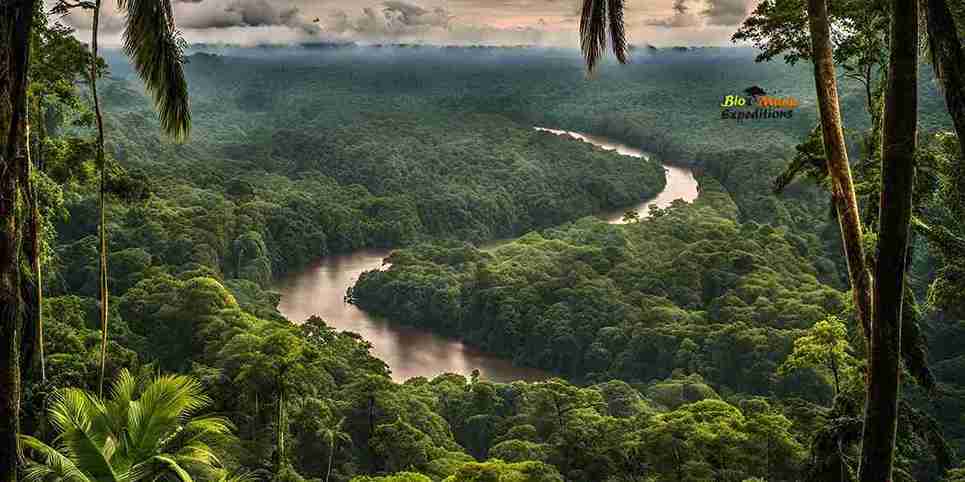


Manu Biosphere Reserve: Earth’s Richest Biodiversity Haven – A UNESCO Gem Where Andes Meet Amazon, Hosting Over 1,000 Birds and Rare Wildlife
In Peru’s heart, where Andes meet Amazon, lies Manu Biosphere Reserve—a UNESCO gem spanning 1.8M hectares. A haven of lush life, it hums with rare birds, flows with otters, and hides ancient secrets. A global treasure, it boasts Earth’s richest biodiversity, a paradise for scientists, adventurers, and dreamers.
Picture a world where craggy mountain ridges cloaked in mist roll down into soft cloud forest, then drop suddenly into the rich, dripping undergrowth of lowland Amazon rainforest. The Manu Biosphere Reserve isn’t one landscape—it’s an orchestra of ecosystems woven together by altitude and imagination. Up high, in the puna grasslands, Andean condors soar on thermals, their shadows skimming the earth. Descend into the cloud forests, and you’re greeted by the fiery flash of the Andean cock-of-the-rock, its crimson feathers a stark contrast to the misty green. Lower still, the rainforest unfolds—a kapok forest maze, its roots embracing microcosms of orchids and insects, as the Manu River slices a muddy course through everything. This vertical climb from 12,000 feet to only 600 feet above sea level generates a kaleidoscope of habitats, each packed with life not found elsewhere.
Manu doesn’t just have biodiversity—it redefines it. Imagine this: more than 1,000 bird species, more than any other nature reserve on the globe. Heralded by sunrise, clay licks awaken to a whirlwind of macaws, parrots, and parakeets, their screeches and scarlet feathers painting the jungle as a living mural. Elusive harpy eagles soar overhead, while dainty hummingbirds flash like gems among wildflowers. On land, jaguars creep stealthily, their spotted fur merging with the mottled light, and tapirs plod through the underbrush, unaware of the world above. Paddle an oxbow lake, and you may see giant otters—whiskered, playful marvels that bark and dive together—or catch a glimpse of the prehistoric gaze of a black caiman. With over 20,000 plant species, from medicinal vines to towering palms, and a menagerie of mammals like the spectacled bear and pink river dolphin, Manu is a biodiversity jackpot that leaves even seasoned naturalists in awe.
Step into Manu, and you’re stepping back in time. Areas of this reserve, such as the closed Manu National Park core, are unvisited by human hands, leaving intact ecosystems as they have been for thousands of years. The land is home to indigenous peoples, the Matsiguenka and Yine, who coexist peacefully with the forest, their practices interwoven into the forest’s fabric. Archaeological rumors speak of even more ancient residents—pre-Inca societies whose legacies lie in the roots. Conservation has preserved this time capsule, protecting it from logging and mining that imperil so much of the Amazon. The payoff? An untouched wilderness where each leaf, each paw print, is a testament to survival and resilience—a snapshot of the Earth before the world was altered.
In addition to its aesthetics, the Manu Biosphere Reserve is a lifeline to the planet. Its forests are a carbon sink, fighting climate change one breath at a time, and its genetic diversity holds secrets to medicine, agriculture, and ecology. Scientists converge here to research species such as the poison dart frog, whose toxins could hold the key to new drugs, or the Amazonian manakin, whose courtship rituals cannot be explained. For Peru, it’s a source of national pride and a draw for eco-tourism, attracting those who want adventure without leaving a scar.
Traveling to Manu isn’t a trip—it’s a dive into the world’s beating heart. From Cusco, the path winds through misty passes and colorful villages such as Paucartambo, every mile unpeeling slices of civilization until the jungle dominates. You may boat down the Manu River, the water teeming with dolphins and caimans, or hike trails on which monkeys chatter above and the scent is of earth and rain. Whether a fast 3-day getaway or a plunge into the protected area, the experience is primal: the humid heat, the life symphony, the excitement of a jaguar shadow sighting. For those who wish to venture forth, Bio Manu Expeditions provides well-organized tours with a balance of adventure and reverence, their guides transforming every twig snap into a discovery. Manu Reserved Zone is not a place to visit—it’s an invitation to see the world’s most abundant biodiversity in all its wild splendor. Will you respond?
